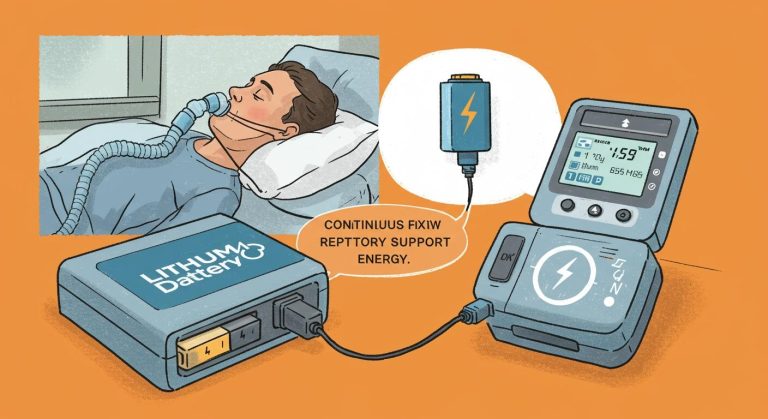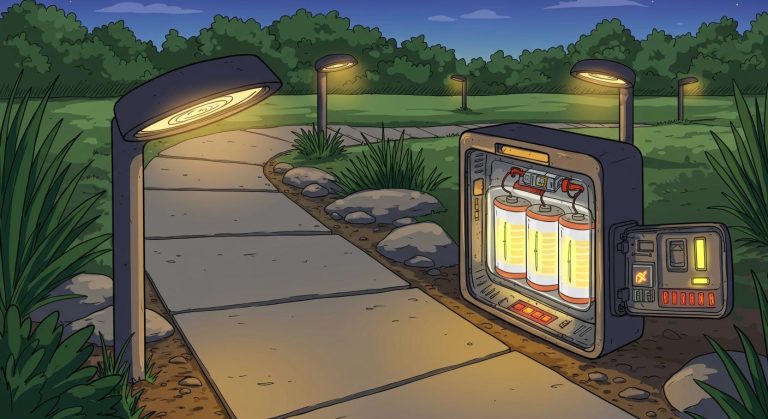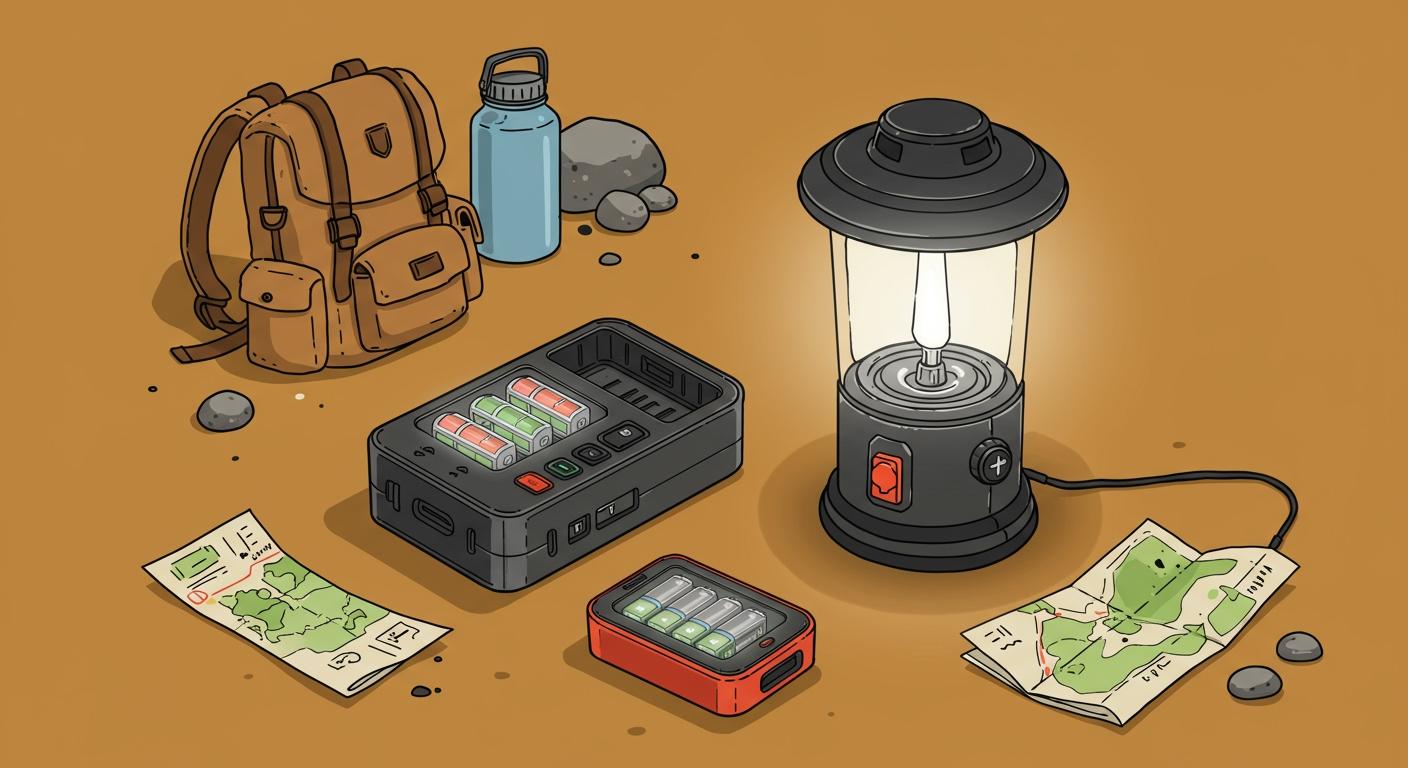
When you head out for camping, you want your portable outdoor lights to keep working all night. Picking long-lasting batteries is the key to avoiding sudden darkness. Most modern camping light batteries use lithium-ion or LiFePO4 chemistries because they handle rough conditions and deliver reliable power. You need batteries that resist weather, survive drops, and match your device’s power needs. Many outdoor enthusiasts report issues like loose connections, voltage problems, and unexpected battery drain, so regular maintenance matters.
Key Takeaways
Choose lithium-ion or LiFePO4 batteries for camping lights. They offer the best mix of runtime, reliability, and safety.
Match your battery type to your camping light’s power needs. This prevents unexpected darkness and ensures consistent performance.
Regularly maintain your batteries to avoid issues like loose connections and voltage problems. This keeps your lights shining bright.
Consider rechargeable batteries for long-term savings and environmental benefits. They reduce waste and provide reliable power.
Look for camping lights with weather-resistant features. This ensures your batteries perform well in tough outdoor conditions.
Part 1: Camping Light Batteries and Power Needs
1.1 Types of Camping Lights
When you plan a camping trip, you have a lot of choices for lighting. Each type of camping light comes with its own battery needs. Here’s a quick look at the most common options:
Type of Camping Light | Battery Requirements | Advantages/Disadvantages |
|---|---|---|
Long battery life; avoid lithium unless specified by manufacturer | Pros: Long battery life, good light output, rugged, quiet, safe around kids. Cons: Battery usage and disposal. | |
Fuel-Burning Lanterns | Runs on liquid-fuel, propane, or butane; fuel-efficient | Pros: High light intensity. Cons: Requires ventilation, generates heat, noisy, bulky. |
Candle Lanterns | Uses candles; minimal glow; no batteries required | Pros: Soft light, pleasant ambiance. Cons: Minimal light output, generates heat, must be kept away from flammable materials. |
You might also see high-performance headlamps and compact lanterns that use lithium battery packs. These are popular in sectors like security systems, medical, and industrial applications because they offer reliable power and long runtimes. When you choose camping light batteries, always check the manufacturer’s recommendations.
1.2 Power Consumption
Different types of camping lights draw power at different rates. LED lamps use less energy and stretch battery life, making them a smart choice for long trips. High-performance headlamps, especially those with lithium battery packs, deliver strong light output for demanding tasks. You’ll find these in robotics, infrastructure, and consumer electronics, where efficiency matters. Fuel-burning lanterns don’t use batteries, but they need regular refueling. Always match your battery to your device’s power needs to avoid running out of light when you need it most.
1.3 Environmental Demands
Outdoor conditions can be tough on camping light batteries. Humidity and temperature swings affect battery performance. High humidity can cause corrosion and chemical breakdown, especially in lithium-ion batteries. Water molecules may get into the battery’s electrolyte, reducing efficiency. Low humidity can lead to static electricity, which might damage sensitive parts like the Battery Management System. Rough handling, dust, and rain also challenge your gear. Look for camping lanterns and lights with weather-resistant features to keep your lights shining, no matter the conditions.
Part 2: Comparing Long-Lasting Batteries for Camping
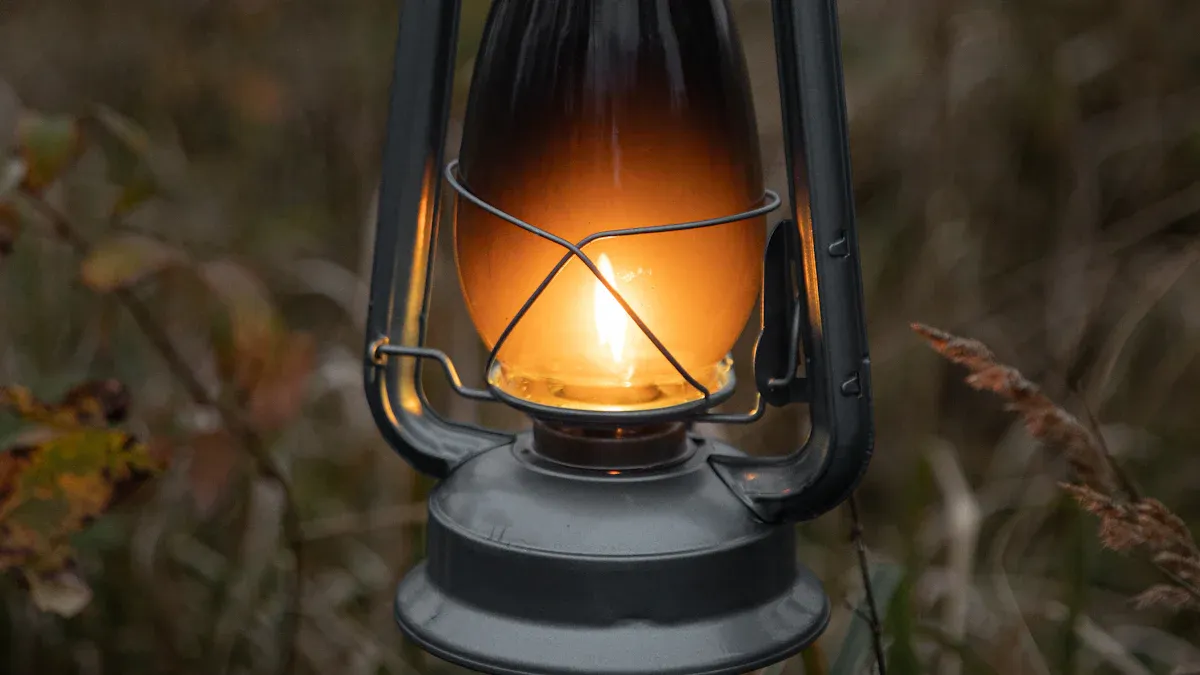
2.1 Lithium-Ion vs. LiFePO4
When you look for long-lasting batteries for your camping lights, you’ll notice lithium-ion and LiFePO4 batteries stand out. Both types power devices in medical, robotics, security systems, and industrial sectors because they deliver reliable energy and handle tough conditions.
Let’s break down the differences:
Lithium-ion batteries give you higher energy density. You get more power packed into a smaller, lighter battery. Typical energy density ranges from 100–265 Wh/kg, so your camping light can run longer without adding extra weight.
LiFePO4 batteries offer a much longer cycle life. Some can last up to 6,500 cycles before dropping to half their original capacity. Even smaller LiFePO4 batteries keep at least 80% of their capacity after 3,000 cycles.
Lithium-ion batteries work well when you need compact, lightweight power for high-performance lights or portable lithium battery packs.
LiFePO4 batteries shine in situations where you want maximum safety, long life, and resistance to extreme weather. They’re popular in outdoor, medical, and industrial applications.
Here’s a quick comparison of common lithium battery chemistries used in camping and portable lighting:
Chemistry | Platform Voltage (V) | Energy Density (Wh/kg) | Cycle Life (cycles) | Key Application Scenarios |
|---|---|---|---|---|
LiFePO4 | 3.2 | 90–120 | 2,000–10,000 | Camping, medical, industrial, robotics |
NMC | 3.7 | 150–220 | 1,000–2,000 | Consumer electronics, e-bikes, power tools |
LCO | 3.7 | 150–200 | 500–1,000 | Consumer electronics, cameras |
LMO | 3.7 | 100–150 | 300–700 | Power tools, medical devices |
LTO | 2.4 | 70–80 | 10,000–20,000 | Industrial, grid storage, robotics |
Solid-State | 3.7–4.2 | 250–500 | 1,000–10,000 | Next-gen portable devices, medical |
Lithium Metal | 3.0–3.6 | 300–500 | 500–1,000 | High-end electronics, aerospace |
Tip: If you want a battery that lasts for years of camping trips, LiFePO4 is a top pick. If you need the lightest setup for hiking or backpacking, lithium-ion batteries might be better.
2.2 NiMH, NiFe, and Alkaline Options
You might also see NiMH, NiFe, and alkaline batteries in camping light batteries. These options have different strengths and weaknesses.
Here’s how they stack up for runtime and reliability:
Battery Type | Runtime on Low | Runtime on Turbo |
|---|---|---|
Alkaline | 120 hours | 45 minutes |
NiMH | 80 minutes | 1 hour 20 minutes |
14500 | 30 hours | 45 minutes |
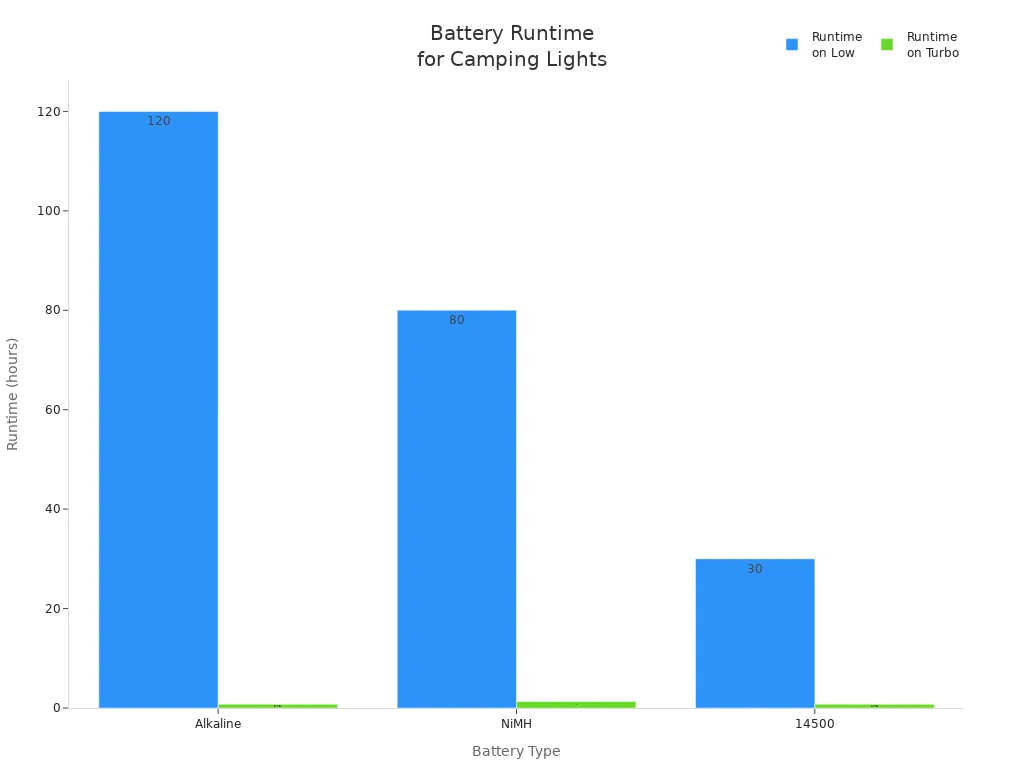
Alkaline batteries give you long shelf life and predictable performance. They work well for emergencies because they hold a charge for years if you don’t use them.
NiMH batteries, like Eneloops, don’t leak and are more reliable over time. You can recharge them hundreds of times, which cuts down on waste.
NiMH batteries also perform better than alkaline batteries in high-drain camping lights. For example, a flashlight that runs 80 minutes on NiMH might only last 30 minutes with alkaline batteries.
Alkaline batteries can leak and damage your camping gear, especially if you leave them inside for a long time.
NiMH batteries are eco-friendly because you can recharge them many times. They don’t contain toxic metals like cadmium, so they’re safer for the environment.
When you think about the environmental impact, keep these points in mind:
Alkaline batteries are single-use and create a lot of waste. Their production uses a lot of energy and raw materials.
Recycling alkaline batteries is possible, but it’s expensive and not all facilities accept them.
NiMH batteries reduce waste because you can recharge them so many times.
2.3 Pros and Cons
Let’s sum up the main advantages and disadvantages of each battery type for camping lights:
LiFePO4 Batteries
Pros: Long life cycle (up to 10,000 cycles), safe, eco-friendly, lightweight, fast charging, works in extreme weather, low maintenance.
Cons: Lower energy density, higher self-discharge, needs more protection, not great at low temperatures.
Lithium-Ion Batteries
Pros: High energy density, lightweight, consistent brightness, works well in cold, versatile charging options.
Cons: Shorter cycle life than LiFePO4, can degrade faster in harsh conditions, needs careful handling.
NiMH Batteries
Pros: Environmentally friendly, affordable, no memory effect, reliable for high-drain camping lights.
Cons: Higher self-discharge, lower energy density, shorter runtime compared to lithium options.
Alkaline Batteries
Pros: Long shelf life, predictable performance, good for emergencies.
Cons: Single-use, can leak, creates more waste, not reliable for high-drain devices.
NiFe Batteries
Pros: Extremely long lifespan, robust in harsh environments.
Cons: Bulky, heavy, low energy density, slow charging.
Battery Type | Performance Characteristics |
|---|---|
Alkaline | Predictable, long shelf life, suitable for emergencies, holds charge well over time if unused. |
Rechargeable Lithium-Ion | Versatile, consistent brightness, better performance in cold conditions, can be recharged via multiple methods. |
If you want the best long-lasting batteries for camping, focus on lithium-ion or LiFePO4 rechargeable batteries. They give you the best mix of runtime, reliability, and safety for your camping light batteries.
Part 3: Rechargeable Batteries vs. Disposable
3.1 Cycle Life
When you choose batteries for camping lights, cycle life matters. Rechargeable batteries, especially lithium battery packs like LiFePO4, NMC, and LTO, deliver hundreds or even thousands of cycles. You can use them for a long duration in medical, robotics, and industrial sectors. Disposable batteries only last for one use. If you need high performance and reliability, rechargeable batteries stand out. You get consistent power for your camping needs, and you avoid frequent replacements.
3.2 Cost and Impact
Let’s talk about cost. Rechargeable batteries have a higher initial price, but you reuse them many times. Disposable batteries seem cheaper at first, but you buy them again and again. Here’s a quick comparison:
Battery Type | Initial Cost | Reuse Cycle | Cost per Use | Total Savings Over Time |
|---|---|---|---|---|
Rechargeable | Higher | Hundreds | Lower | Substantial |
Disposable | Lower | One-time | Higher | None |
You save money over time with rechargeable batteries. You also help the environment. Disposable batteries release hazardous chemicals like lead and mercury when thrown away. These toxins pollute soil and water, harming ecosystems and people. Rechargeable batteries reduce waste and support sustainability. You can learn more about sustainable battery practices here.
3.3 Safety Outdoors
Safety is critical when you use batteries outdoors. Both rechargeable and disposable batteries have risks:
Fire hazards can occur if you handle or dispose of disposable batteries improperly.
Batteries may leak chemicals if you store or throw them away carelessly.
Disposable batteries can contaminate soil and water with mercury and lead.
To stay safe, follow these tips:
Avoid mixing old and new batteries in your camping lights.
Store batteries in a cool, dry place to prevent leaks and short circuits.
Never toss batteries in the trash. They contain hazardous materials.
If you want to know more about conflict minerals in batteries, check out this statement.
Choosing rechargeable batteries for camping lights gives you better safety, lower costs, and a positive impact on the environment. You also get reliable power for high performance in demanding outdoor conditions.
Part 4: Battery Specs and Performance
4.1 Capacity and Voltage
When you choose a battery for camping lights, you want to know how much power it can store and deliver. Capacity tells you how long your light will run before you need to recharge or replace the battery. Voltage shows how much electrical force the battery provides. If you pick the right combination, your camping lantern or headlamp will shine bright all night.
Here’s a quick table to help you compare typical battery specs for camping lights:
Battery Type | Capacity (mAh) | Voltage (V) |
|---|---|---|
Headlamp | 2600 | 3.6 – 3.7 |
Lantern | 5000 | 3.6 – 3.7 |
Higher capacity means longer runtime. Most lithium battery packs for camping use voltages between 3.6 and 3.7 volts. These specs work well for medical, robotics, and industrial applications, too.
4.2 Runtime and Efficiency
You want your camping lights to last through the night, especially if you’re far from power sources and rely on off-grid charging. Efficiency matters. A battery with higher capacity gives you longer runtime, even on cloudy days when solar charging is slow. LiFePO4 batteries perform well in extreme temperatures, so your lights stay reliable in harsh weather.
Higher capacity batteries provide longer runtimes and better performance during cloudy days.
LiFePO4 batteries excel in extreme temperatures, ensuring consistent illumination.
The choice of battery affects maintenance needs and overall cost-effectiveness.
If you use lithium battery packs, you’ll notice less downtime and fewer replacements. That’s a big advantage for outdoor professionals and anyone working in security systems or infrastructure.
4.3 Durability Features
Camping can be rough on your gear. You need batteries that stand up to water, dust, and drops. Many camping flashlights, like NEBO models, are waterproof and impact resistant. They use USB rechargeable lithium battery packs, so you don’t have to worry about swapping batteries in the field. Features like optimized C.O.B. technology give you a focused beam, perfect for medical or industrial tasks.
Waterproof and impact-resistant designs protect your battery from rain and rough handling.
Rubberized construction, like in the UST 60-Day Duro Lantern, adds extra durability.
Manufacturers test batteries in climate simulation chambers, using thermal shocks, impermeability, and corrosion tests.
Validation includes prototype characterization, sample testing, and field trials to ensure quality.
If you want to learn more about battery management systems (BMS) and how they protect your lithium battery packs, check out this resource.
Tip: Always look for camping lights with waterproof, dustproof, and shock-resistant features. These specs keep your battery safe and your lights working, even in tough outdoor conditions.
Part 5: Maximizing Battery Life Outdoors
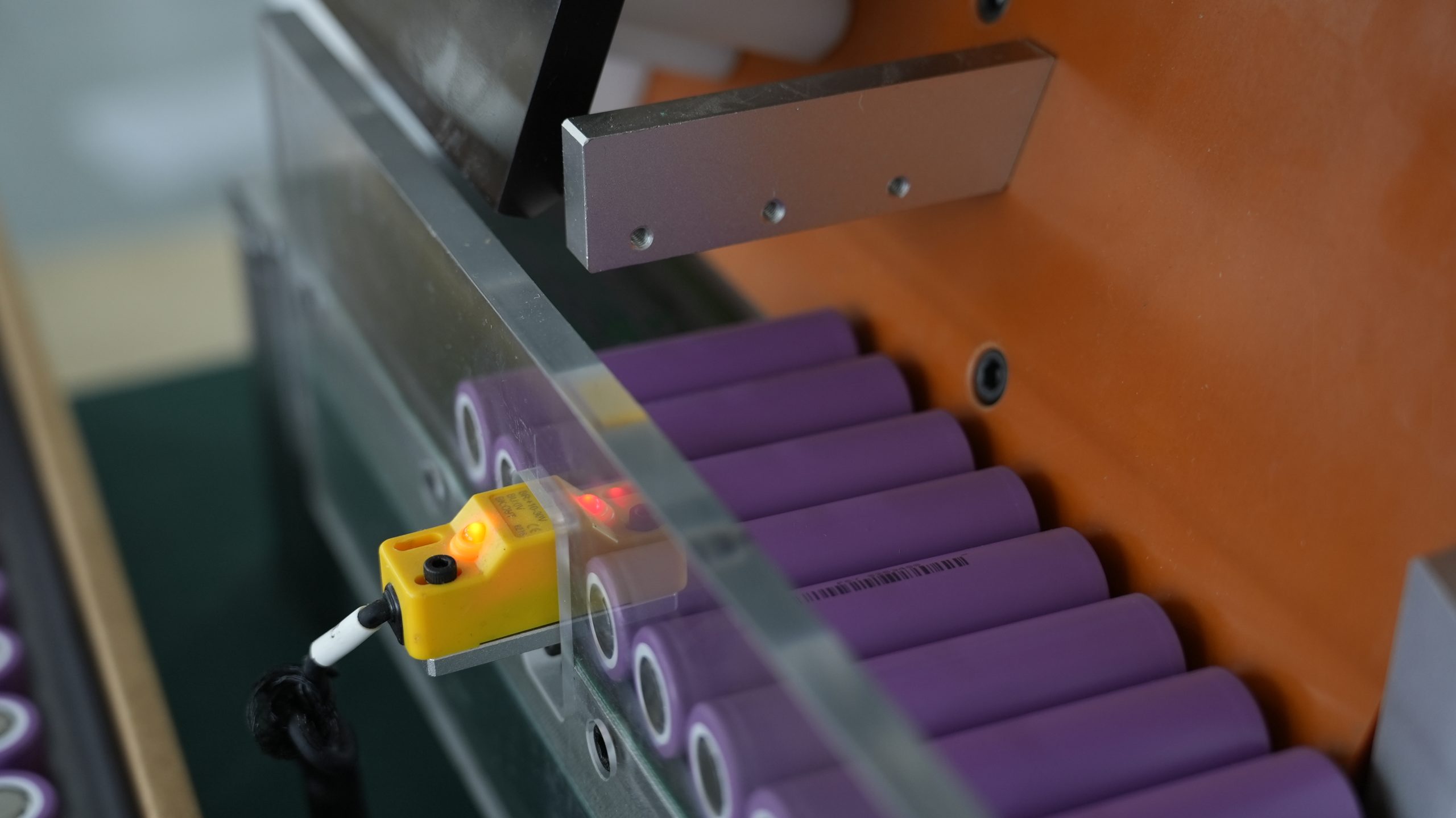
5.1 Charging Tips
You want your camping lights to last through every shift and outdoor project. Smart charging practices help you get the most out of every battery. Here are some tips to keep your lithium battery packs performing at their best:
Use solar panels at your base camp to harness sunlight for charging. This method works well for remote infrastructure or robotics deployments.
Switch devices to low power modes, like the red-light setting on headlamps, to stretch battery life.
Turn off lights when not in use. This simple habit prevents unnecessary battery drain.
Protect your battery from extreme temperatures. Heat and cold can reduce performance, especially in medical or industrial settings.
Slow charging is better than quick charging. Fast charging stresses battery cells, especially in LiFePO4 and NMC chemistries.
Avoid overnight charging. Use chargers rated for about a quarter of the battery’s capacity.
Keep the state of charge between 20% and 80%. Charging to 80% instead of full capacity helps prolong battery lifespan.
Tip: Avoid overcharging and deep discharging. These habits can damage lithium battery packs and shorten their cycle life.
5.2 Safe Storage
Proper storage keeps your camping batteries ready for action. If you work in security systems or industrial sectors, you know downtime is costly. Follow these steps to prevent degradation:
Store batteries in a cool, dry place. Ideal temperatures range from 50–95°F (10–35°C) for LiFePO4 and 50–80°F (10–27°C) for lead-acid.
For long-term storage, check your lithium battery packs every three months. Run a charge/discharge cycle and keep them at about 90% capacity.
Avoid storing batteries with flammable materials. Overheating can pose a fire hazard.
Maintain the state of charge at 90-100% for best results.
The recommended storage temperature for most batteries is 59°F (15°C). Extreme temperatures can cause self-heating, gas release, or even explosions.
Note: Improper storage reduces battery lifespan and increases safety risks. Always follow manufacturer guidelines for decommissioning and maintenance.
5.3 Troubleshooting
Even with the best practices, you may encounter battery issues during camping or field operations. Here’s a quick reference table to help you resolve common problems:
Battery Issue | Description and Solution |
|---|---|
Improper Storage | Clean terminals, use a maintenance charger, and store correctly. |
Overheating | Monitor temperature, ensure ventilation, and refill water for flooded lead-acid batteries. |
Irregular Maintenance | Schedule seasonal checks to maintain battery health. |
Overcharging or Undercharging | Follow charging guidelines to prevent performance loss. |
Warning Signs | Watch for dim lights, hesitation when starting, or dashboard indicators. |
If your portable outdoor lights fail, try these steps:
Check solar panel placement and clear obstructions.
Clean and inspect solar panels for damage.
Evaluate battery performance and replace old batteries.
Test LED bulbs and replace faulty ones.
Inspect wiring connections for corrosion or damage.
Verify light sensor operation and adjust settings.
Consider environmental factors like weather or vegetation.
Perform a system reset by disconnecting and reconnecting batteries.
Review manufacturer guidelines for specific troubleshooting advice.
If you follow these steps, you can keep your camping lights reliable and your battery packs ready for any outdoor challenge.
When you select long-lasting batteries for camping lights, you want to match battery type, capacity, and durability to your needs. Take a look at the key factors:
Battery Type | Key Features |
|---|---|
LiFePO4 | Stable, safe, long cycle life, ideal outdoors |
Lithium-ion | High energy density, reliable in cold |
Rechargeable | Cost-effective, reusable in the field |
Choose rechargeable batteries for extended use and lower costs.
Make sure your battery fits your device and can handle tough conditions.
Lithium-ion and LiFePO4 batteries work well in medical, robotics, and industrial sectors. These batteries resist thermal runaway and perform in extreme temperatures. You get reliable power and safety every time.
Take care of your battery and prioritize durability. Your camping lights will stay bright and dependable.
FAQ
How do LiFePO4 batteries perform in harsh outdoor environments?
LiFePO4 batteries handle extreme temperatures and rough conditions well. You get stable power for medical, robotics, and industrial applications. Their cycle life reaches up to 10,000 cycles, making them ideal for long-term outdoor use.
Can you use lithium battery packs in security systems and infrastructure projects?
Yes, lithium battery packs like NMC and LiFePO4 work in security systems and infrastructure. You get reliable energy, high platform voltage (3.2–3.7 V), and strong cycle life. These batteries support continuous operation in demanding environments.
What is the main advantage of lithium battery packs over alkaline batteries?
Lithium battery packs deliver higher energy density (up to 265 Wh/kg), longer runtime, and thousands of recharge cycles. You reduce waste and maintenance. Alkaline batteries offer only single-use performance and shorter lifespan.
How do you maximize battery life for portable outdoor lights?
You should keep batteries between 20% and 80% charge. Avoid deep discharges and overcharging. Store batteries in cool, dry places. Use slow charging methods for LiFePO4 and NMC packs to extend cycle life.
Are lithium battery packs safe for use in medical and robotics sectors?
Yes, lithium battery packs like LiFePO4 and LTO provide strong safety features. You get thermal stability and resistance to thermal runaway. These chemistries meet strict standards for medical, robotics, and industrial applications.


